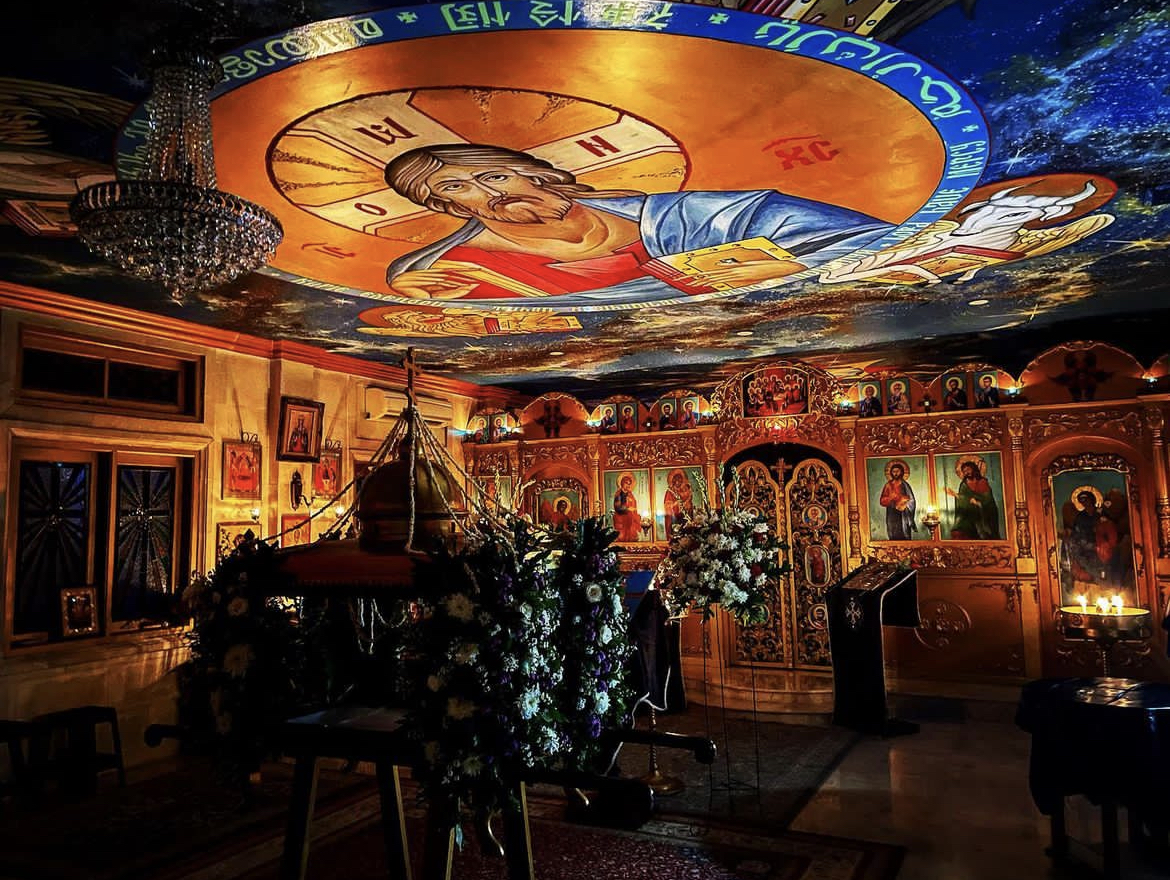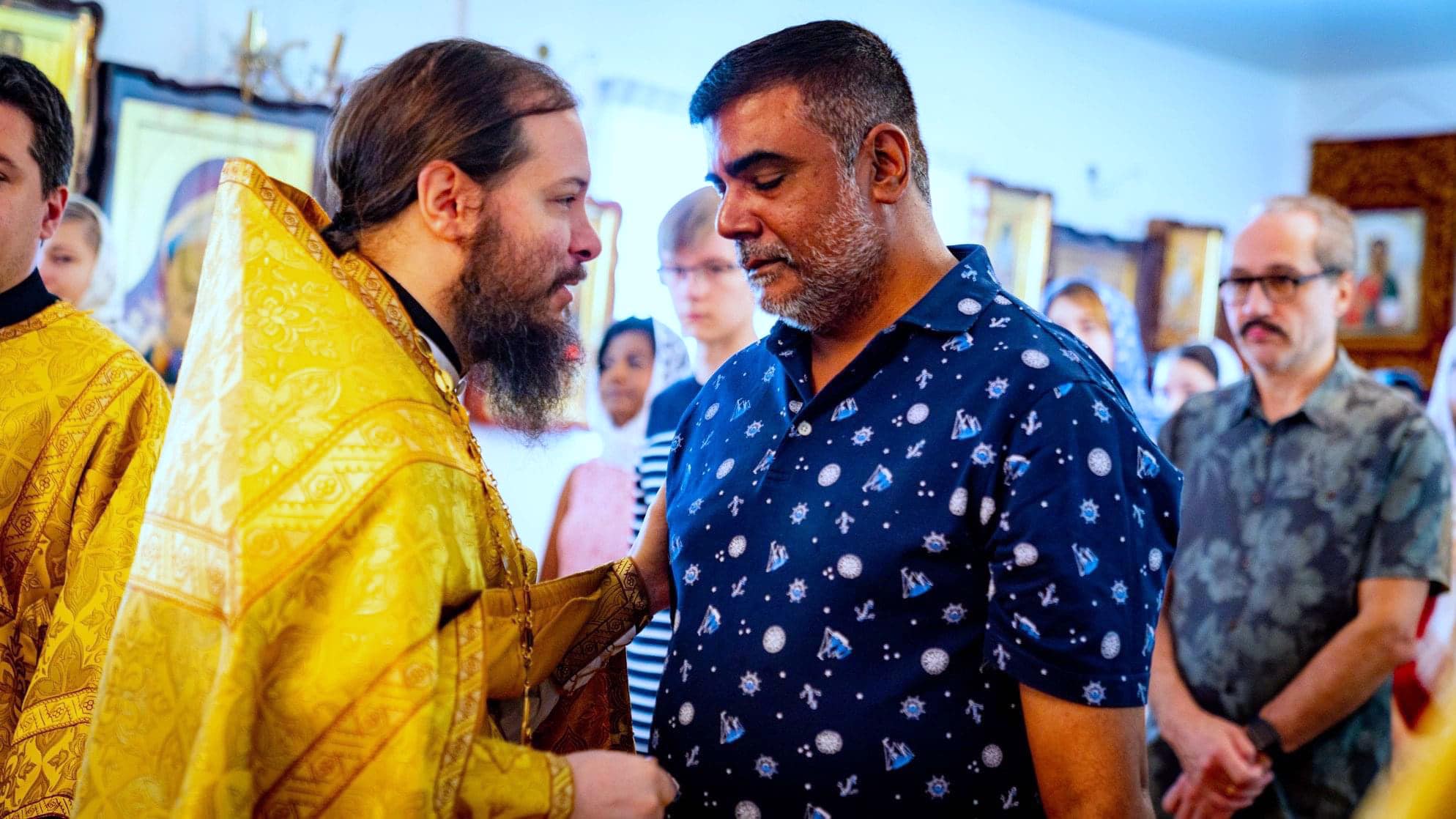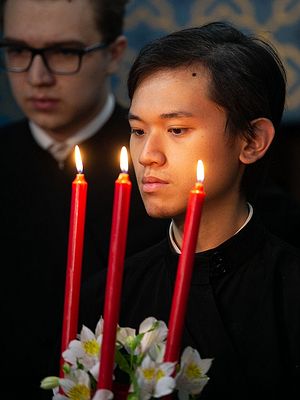“Orthodox Liturgy is like nothing else”

Conversation with an Orthodox Chinese about his path to Orthodoxy
Joshua is a Chinese who recently joined the Orthodox Church, becoming a parishioner of the Dormition Parish of the Moscow Patriarchate in Singapore. Despite his youth and Protestant roots, Joshua made his transition not immediately and completely consciously, which is what his story is about.
— Hi Joshua! We would like to congratulate you on your recent Chrismation! May God grant you many years! We would like you to first introduce yourself, what is your occupation and some little background information about yourself?
— Thank you very much! I am a Malaysian-born Chinese currently living in Singapore and working in the corporate communications industry. I was born and raised in a Methodist church, then attended Anglican and other Protestant churches. I also explored the Roman Catholic church. I enjoyed learning about God from a young age, and one of my favourite authors, the English writer C.S. Lewis, played a very big role in influencing how I think about God and about faith. Only later on did I realise that many of his ideas were very Orthodox, and prepared me to recognise the truth when I encountered it in Orthodoxy.
— How did you come to the knowledge of our parish, The Dormition of the Theotokos and most importantly how did you come to the knowledge of Orthodoxy?
— I had a friend in university who was Orthodox who introduced me to the faith and who invited me to church. Before this, I knew almost nothing about it. Thanks to my friend, I read some books and articles about Orthodoxy and became more interested in the faith, but did not take it further. On Meatfare Sunday before Great Lent of 2020, I decided to go to church again, and that was the first time I came to Holy Dormition. There, I met friendly people who spoke to me about faith. But it was the liturgy that kept me coming back. It was beautiful and did not feel like any other church service I had been to. So I kept coming to church, and reading more about Orthodoxy, and speaking to people (including Vladyka Pitirim) about my questions. Finally, one week before Nativity 2021, I decided to be chrismated into the Church.

— Interesting! So you have attended many churches, so of all of them why Orthodoxy? There are many times that we fast and we have strict dietary restrictions. What was the Turning point in your life? Was there any noteworthy change that made you decided to be an Orthodox Christian?
— To be honest, the dietary restrictions were initially quite an obstacle for me! But as I first started attending church during Great Lent, I decided to try and follow them, and found them not as difficult as I’d originally feared (maybe I’m just not that particular about my food).
I wouldn’t say that there was a specific turning-point leading to my conversion, but more a coming together of different factors and the culmination of a process that began years ago. As I read and questioned more about my faith, I developed beliefs and convictions that diverged more and more from what my Protestant friends believed in. For example, I started to question, and eventually rejected, the idea of sola scriptura (the doctrine that the Bible is the only source of authority for Christian belief). And I developed an appreciation for the sacraments, such as baptism and the Holy Eucharist, which most Protestants view as little more than external symbols which are helpful for faith but not essential.
Over time, the beliefs I came to hold made me want to explore more traditional forms of Christianity, such as Roman Catholicism and Orthodoxy. While I learnt much from my time exploring Roman Catholicism, there were some doctrines in it which I found difficult to accept. When I started to learn more about Orthodoxy and to attend Liturgy, on the other hand, it felt like coming home. Here, I did not need to make a mental effort to accept doctrines. Rather, what the Church taught felt true, and in line with what I myself had come to believe. There were questions, of course. But they were of a different kind, and were eventually resolved. And as I’ve mentioned, the liturgy was beautiful, and felt like what worship should be.
There is much more than I can say, and to those currently in the parish, I would love to speak to you more in person if you are interested. The actual process was a lot messier and less rational than what I’ve made it out to be! But in a nutshell, I decided to be Orthodox because I believe that the Church is Orthodox — possessing true doctrine, and true worship.
— Wow Alleluia!! Could you please describe to us reading the interview, what are the differences between Protestant and Roman Catholic services compared to the Divine Liturgy of the Orthodox Church?
— That’s a difficult question to answer! There are many different kinds of services, especially among Protestants, because there are many different kinds of Protestant churches. In general, my impression of a Protestant service is that it is like a disco — sometimes literally, as it can involve a darkened room, flashing lights, and loud, pulsing music! But metaphorically as well, in that you are supposed to come as you are and be your authentic self. It is very informal, and the focus is on being genuine and open before God, and on having a personal connection with Him. (This depends on the church — some are more formal/liturgical than others.) Some Protestant services can feel like a mixture of a concert and a lecture: after singing, the sermon is the central focus, and it can last from 30 minutes to an hour and can sometimes be very academic in nature.
My impression of a Roman Catholic Mass is that it is like a ballroom dance. Everything is very formal and elaborate; there is a set routine that everyone follows; there is a proper place and time to do everything — to stand, to sit, to kneel.
With the Divine Liturgy, however, it feels like neither of the above, but something totally different. There is the feeling of having stepped out of the ordinary routine of things and into a new space. It is like stepping into a river — it is neither formal nor informal. You just become part of the flow.
— Interesting, we understand that the Protestants do not have prayers to the Most Holy Theotokos and the Orthodox Church venerates her greatly, was it a problem for you as you grew up from a Protestant background?
— Being brought up a Protestant, it took me a while to appreciate and venerate the Theotokos. From quite early on, though, I knew that I wanted to cultivate the level of devotion for her that the Church has always held. So I listened to podcasts and read books and articles about her, and prayed for God to help me to view her the way I should. And slowly, as I read and heard the prayers and hymns of the Church (especially ‘It is Truly Meet’), I came to see just how special and holy she is, and the incredible wonder and miracle that is the incarnation of Christ. I am thankful to God for this.

— We also understand that the Orthodox Church here in Singapore is a mission from the Moscow Patriarchate, was there a difficulty for you to understand Church Slavonic? Did you feel any sense of being out of place?
— The first liturgy I attended was half in Slavonic and half in English. I was very attracted by its beauty, and the sense of God’s presence there. It felt peaceful and refreshing. The language barrier was not a huge concern to me, simply because all the other parts of the liturgy were so attractive. That said, I am very glad that the church now has full English-language liturgies as this not only helps me to understand what is going on, it also makes it a lot easier to invite my friends to visit. While I think that Church Slavonic is a beautiful language, I am excited too that liturgy is now more accessible to people who do not understand it. After all, the Orthodox Catholic Church is for all people of every nation, language, and culture, and I do not think that you should have to learn another language or adopt a different culture in order to be a part of it. Incidentally, that is also why I find saying the ‘Our Father’ in various languages so beautiful — it highlights that though we are from many different ethnicities, we all share the same Heavenly Father and are one in Christ.
— Thank you so much for your time Joshua! May the prayers of the Most Holy Theotokos protect and God bless!
— You’re welcome! Please pray for me on my journey!
Translated from English by Anton Pospelov

A Deeper Look at the Russian Orthodox Community in Jakarta

“The Lord was leading me in the right direction”
